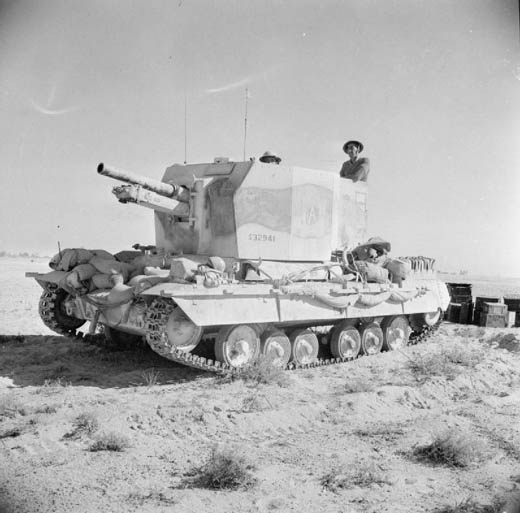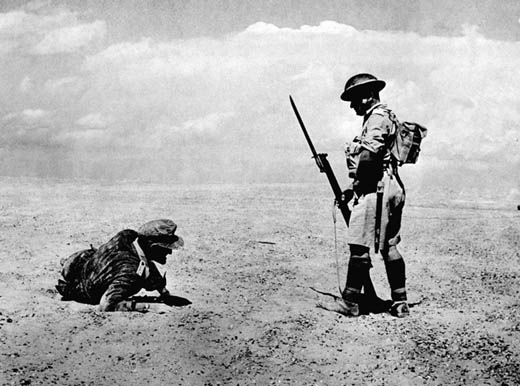Air Operations, Europe
BOMBER COMMANDDaylight Ops:
- 6 Wellingtons are sent to Emden where only 1 plane drops its bombs which hit fields; there are no losses.
- 2 Mosquitos of 105 Squadron are sent to Flushing to attack a damaged merchant ship, but do not return. It is believed that they do hit the ship again. 2 Mosquitos and 6 Bostons take off to carry out a sea search for the first 2 Mosquitos; they are not located and 1 of the Bostons is lost.
- 67 Lancasters and 9 Stirlings of the Pathfinder Force attack Genoa.
- It is a successful bombing raid, but there are no details.
- There are no losses.
- 12 Wellingtons lay mines of Lorient and St Nazaire without loss.
- Genoa is attacked by the RAF in a succession of night raids causing many casualties and severe damage to the city center.
Air Operations, North Africa
Strong formations of the RAF Eastern Air Command land at Bône. The Luftwaffe carries out heavy counterattacks.
[Air Operations, Solomons
- Beginning at dawn, Cactus Air Force fighters and bombers mount numerous piecemeal attacks against the damaged Japanese battleship Hiei that is adrift off Savo Island. Among the many aircraft involved in the attacks are the first Marine Corps TBFs to see action in the war, elements of newly arrived VMSB-131. Also involved in the attacks are 14 of 25 11th Heavy Bomb Group B-17s taking part in fruitless search missions over New Georgia Sound.
- Marine Corps F4Fs shoot down as many as 10 A6M Zeros over New Georgia Sound during a morning search-and-strike mission against a nonexistent Japanese carrier battle group.
- V Bomber Command B-17s attack the Kahili airfield on Bougainville and ships in the Shortland Islands.
Naval Battle of Guadalcanal
The Japanese send a large convoy of 11 transports carrying 11,000 men and escorted by Tanaka's 11 destroyers. To give cover to the operation and to bombard Henderson Field Adm Abe leads 2 battleships, 2 cruisers and 14 destroyers. The Japanese carriers are at sea farther to the north providing more protection. Adm Callaghan, with 5 cruisers and 8 destroyers, moves to intercept Abe's squadron.
Just before 2:00a.m. the two forces blunder into each other. In an action lasting about half an hour(?) almost all their other ships are damaged. The Americans lose 2 cruisers and 4 destroyers. Once more the Americans fail to make proper use of their radar equipment, partly because various ships have sets with different capabilities, and communications are poor. The Japanese transport convoy turns away.
The battleship Hiei, badly damaged during the night, is attacked repeatedly by American torpedo aircraft and dive-bombers near Savo Island. Damaged beyond repair she is scuttled by the Japanese.
During the night, Japanese warships are located by radar between Savo and Cape Esperance and a naval battle ensues during which 2 enemy destroyers are sunk and 4 damaged. The Japanese retire northward without having accomplished their mission of neutralizing Henderson Field before the arrival of the transport force. US losses are heavy: cruisers Atlanta and Juneau and destroyers Barton, Cushing, Laffey and Monssen are sunk; 5 others vessels are seriously damaged.[MORE]
[Battle of the Atlantic
- Hudson 'D' of No 500 Squadron attacks a surfaced U-boat with 4 depth charges which fell ahead of the boat as she was diving. No results were observed immediately, but subsequent analysis shows the U-411 was sunk in this attack.
- The unarmed US schooner Star of Scotland (2290t) is shelled and sunk by U-159 while en route from Cape Town, South Africa to Paranagua, Brazil. 1 of the 17-man crew is lost when the ship is abandoned.
| Class | Type VIIC |
| CO | Kapitänleutnant Johann Spindlegger |
| Location | Atlantic, SW of Gibraltar |
| Cause | Air attack |
| Casualties | 46 |
| Survivors | None |
Eastern Front
SOUTHERN SECTORThe battle for Stalingrad rages for the next few days as the German attacks begin to overwhelm the 62nd Army. With floating ice on the Volga, the Soviets have difficulty sending supplies across the river and the 62nd begins to run short of food and ammunition. The men cut off at Rynok and Spartakovka suffer badly, coming under sustained attack from the 16th Panzer Division. This group, commanded by Gorokhov, is down to just 300 men but continue to fight on. Chuikov is forced to admit that the end is in sight for the 62nd Army.
[Guadalcanal
8 P-38s of the 339th Squadron, 347th Fighter Group, arrive at the fighter strip just east of Henderson Field after flying from Milne Bay.
A Self-propelled Gun, The Bishop |
 |
Indian Ocean
The US freighter Excello, sailing independently from Port Said, Egypt to Cape Town, South Africa, is torpedoed and sunk by U-181 with the loss of 1 crewman and 1 Armed Guard sailor.
[Mediterranean
U-431 sinks the Dutch destroyer Isaac Sweers 60 miles northwest of Algiers with the loss of 108 of her crew. 86 survivors are picked up by the British anti-submarine trawler Loch Oskaig.
[New Guinea
The Australians eliminate the Japanese rearguards near the Kumusi River. With the Japanese now back beyond the Kumusi River the safety of Port Moresby is ensured. Australian troops find evidence of cannibalism among the starving Japanese.
[North Africa
ALGERIAThe Allied troops at Bône are reinforced by the landing of a parachute brigade, together with an infantry regiment and the advanced headquarters of the British 1st Army. The British 36th Bde, 78th Div, has now passed Djidjelli, 40 miles east of Bougie, in their advance from Algiers. A formal agreement is signed by Adm Darlan and Gen Clark recognizing Darlan as head of the French civil government in North Africa. Gen Eisenhower flies to Algiers to meet Adm Darlan, who pledges the French Africa will be on the side of the Allies. The agreement is ratified by Eisenhower, Nogues and Juin. Giraud is to command the French armed forces.
LIBYAThe X Corps of the 8th Army takes Tobruk.
A Wounded German Officer |
 |
Italian units from Libya join up with the Germans. The Axis forces occupy the Mareth Line, a fortified line somewhat boastfully called the 'African Maginot', built by the French for the protection of the eastern border of their colony.
[